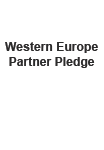Cross-selling and up-selling are amongst the sales strategies that provide better results in the shortest time, since they increase the revenue each of our customers provides us and the average value per ticket. Both are especially used by retail companies, but can be implemented by any type of business. Let's talk about cross-selling and up-selling.

Selling strategies are techniques and methods used by sales teams to persuade potential customers to buy a product or service. These strategies can include various tactics such as building relationships, identifying customer needs, understanding the target market, creating value propositions and negotiating deals. Successful selling strategies involve understanding both customer’s desires and needs and then using that knowledge to create an effective offer. Additionally, successful sales teams must be able to adjust their approach based on feedback from the customer in order to close more deals.
Today, technology plays an important role in customer strategies. Salestech tools can help us refine our sales strategies and achieve better results.
Cross-selling and up-selling are important sales strategies for businesses to maximize revenue, increase customer loyalty and satisfaction, and differentiate their products or services from the competition.
What is cross-selling?
Cross-selling is a sales technique used to persuade customers to purchase related or non-related products in addition to the item they are buying. This strategy is used by many companies and retailers, including online stores and e-commerce companies, to increase their sales revenue. For example, when a customer purchases an item from an electronics store, they may be offered batteries or other accessories that would go along with it.
Cross-selling is an important strategy for businesses of all sizes that want to maximize their profits. It involves selling a complementary product or service in addition to the primary one being offered, with the goal of increasing the average value of the purchase ticket. For example, if you are selling a laptop computer, you might also offer software packages and other accessories like carrying cases or extended warranties as part of your cross-selling efforts.
Cross-selling: Benefits and challenges
The benefits of cross-selling can be significant for businesses that understand how to effectively use it. It allows them to increase sales without having to invest in additional marketing campaigns or develop new products and services; instead, they can leverage existing products and relationships with customers in order to generate more revenue. Cross-selling also helps build trust between customers and brands by demonstrating that the company cares about providing comprehensive solutions rather than just trying to make a quick sale. Furthermore, if done well it can lead to increased customer loyalty rates as satisfied customers are more likely stay loyal over time.
However, there are some challenges associated with implementing successful cross-selling strategies. Businesses must first ensure that they understand their target market’s needs before making any offers; otherwise they risk alienating potential buyers who may not find value in what is being offered or may already have similar items from another provider at lower prices. Additionally, companies need to be careful not too push too hard when promoting these additional items – this could come across as intrusive or overly aggressive which could result in negative feedback from consumers who feel pressured into buying something they don’t really need or want.
If these challenges are overcome, cross-selling is useful because it allows businesses to increase their sales and revenue by selling related products or services to existing customers. This helps companies build relationships with their customers, create a better customer experience, and maximize profits.
Examples of cross-selling use cases include:
- Upgrading an existing product or service
- Offering complimentary items (e.g., adding on accessories)
- Offering discounts on additional purchases
- Bundling multiple products together into one package deal
Overall though, if used properly cross-selling can be extremely effective for businesses looking for ways grow their revenues without investing heavily into new marketing initiatives.
What is up-selling?
Up-selling is a sales technique used to encourage customers to purchase more expensive or upgraded versions of products or services they are interested in. It involves suggesting higher priced items that offer additional features, benefits, or value compared to the item the customer has expressed an interest in.
Upselling is a way for businesses to make more money from existing customers and encourage them to purchase additional products or services that they may not have been aware of. Upselling can be an effective tool in increasing customer loyalty and boosting overall revenue.
At its core, upselling is about providing value to the customer. It’s important that you present your product or service in such a way as to show how it will benefit the customer rather than just pushing them into buying something they don’t need. The key here is positioning yourself as an expert who understands their needs and can give them the best solution available. This builds trust with your customers and makes it easier for them when considering purchasing upgrades or related products from you in the future.
Up-selling: advantadges and challenges
In order for an up-selling strategy to provide the expected results, it must be well defined and implemented.
The main challenges or requirements of a successful up-selling strategy are:
- Understanding customer behavior: It is important to understand the customer’s buying habits and preferences in order to effectively upsell them on other products or services. Without this understanding, it can be difficult to determine which additional items will be attractive to customers.
- Establishing trust with customers: Upselling requires building a level of trust between the company and its customers so that they feel comfortable making larger purchases or considering additional options. If customers don't feel like they're being taken advantage of, then they may be more likely to take your suggestions seriously.
- Identifying opportunities for upselling: You must have an awareness of what products or services you offer that could potentially benefit your customers before attempting any upselling strategy; otherwise, you risk alienating potential buyers by offering something that doesn’t meet their needs or interests.
- Finding the right balance: Too aggressive of an approach can put off potential buyers as well as current ones, while too passive of an approach won't yield any results at all; striking the right balance when it comes to selling strategies is key for success in this area
When done properly, up-selling has many benefits for both businesses and their customers:
- Increased Revenue: Upselling encourages customers to spend more on each purchase which increases profits for businesses over time.
- Improved Customer Satisfaction: Customers appreciate being presented with options that are tailored specifically for them; this helps build relationships based on trust between business owners and their clients.
- Reduced Shopping Cart Abandonment Rate: By offering additional services during checkout, customers are less likely to abandon their carts before completing their purchases.
- Higher Conversion Rates: Presenting upgrade options at checkout gives shoppers one last chance at making an extra purchase before leaving your store; this leads to higher conversion rates overall.
- Enhanced Brand Recognition: When done correctly, upsells help create brand recognition because customers associate successful upsell campaigns with quality products/services offered by companies they already know and trust.
Overall, upselling provides numerous advantages for both businesses and consumers alike if executed effectively. By understanding customer needs better through market research techniques like surveys or focus groups, companies can further customize product/service offerings leading towards even better results down the line!
The difference between cross-selling and up-selling
Cross-selling consists on offering additional products related to the one already being purchased, while up-selling consists on encouraging customers to purchase an upgraded or higher priced version of a product they are already considering buying.
Cross-selling and up-selling are both important marketing and sales strategies for increasing sales. The best strategy depends on the specific situation at hand. Generally, cross-selling is more effective when there are several related products that can be offered to customers as an add-on or bundle, while up-selling is most successful when offering a higher quality version of a single product to increase revenue per sale.
How can companies implement cross-selling and up-selling techniques?
Companies can implement cross-selling and up-selling strategies in many different ways. Some of the most used techniques are:
- Personalize customer service: By understanding customers’ needs and preferences, businesses can tailor their product or service offerings to meet individual requirements and complement the whole process with personalised customer experiences.
- Develop targeted campaigns: Companies should create marketing campaigns that focus on cross-selling and up-selling specific products and services based on customer profiles.
- Utilize loyalty programs: Offering rewards for repeat purchases is a great way to encourage customers to purchase more items from the same company or brand.
- Offer bundle deals: Bundling related products together into one package can be an effective way of increasing sales while providing value for the customer at the same time.
- Use data analysis tools: Businesses should use customer intelligence & analytics tools such as A/B testing, predictive modelling, and customer segmentation to identify trends in consumer behaviour which can then be used to inform cross-selling and up-selling strategies accordingly.
Conclusion
Cross-selling and up-selling are essential strategies for any business looking to increase their revenue. By understanding customer needs, creating attractive offers, and providing excellent customer service, businesses can use these powerful techniques to maximize profits. Cross-selling and up-selling can be used in tandem or independently depending on the situation; either way they’re an effective way to boost sales and keep customers coming back for more.



